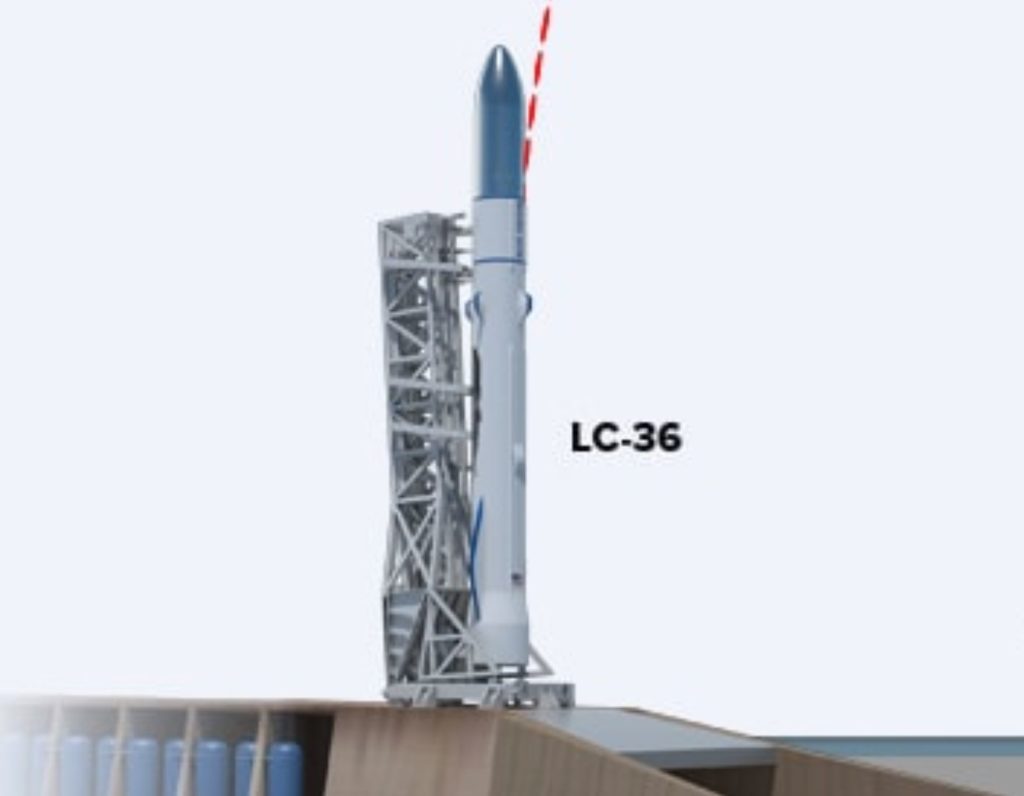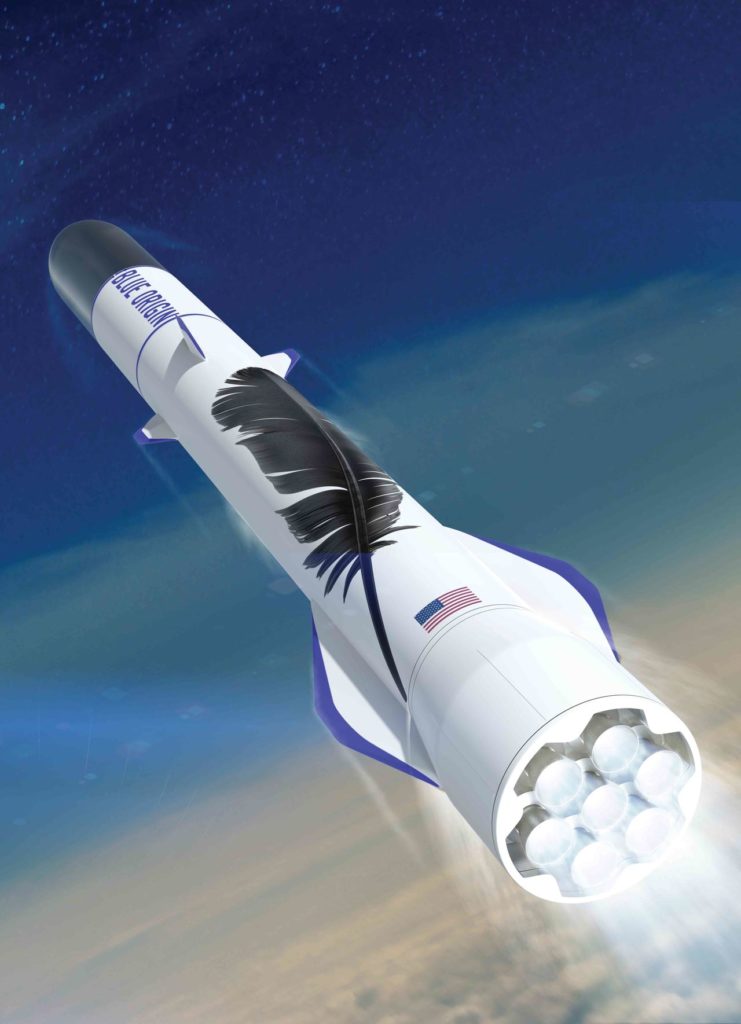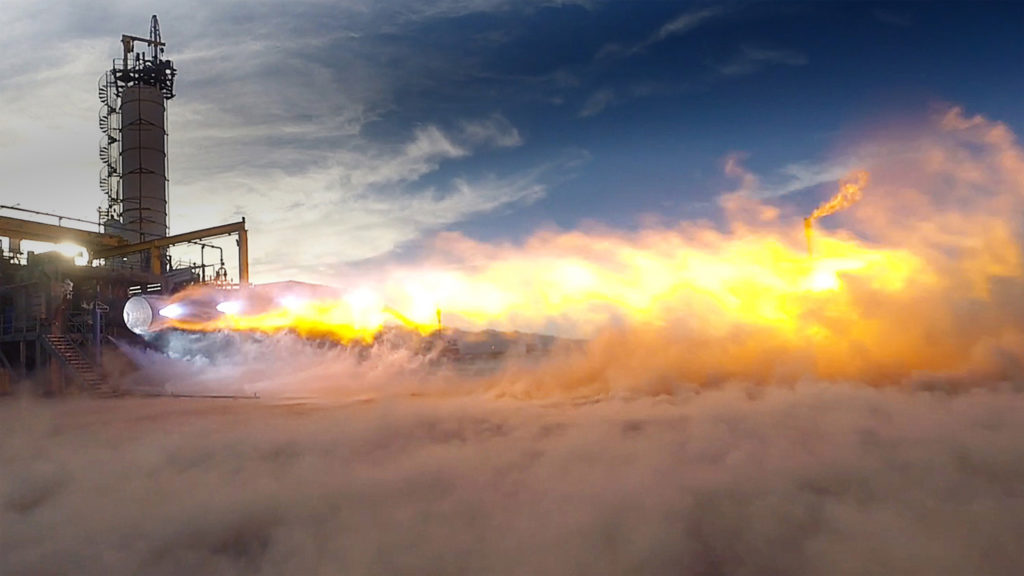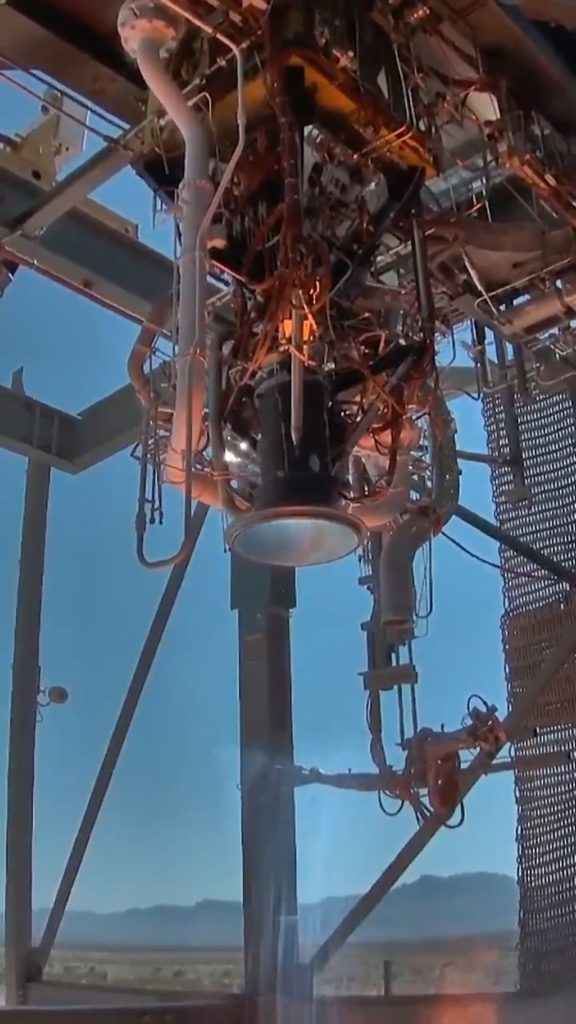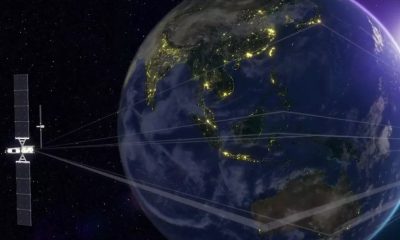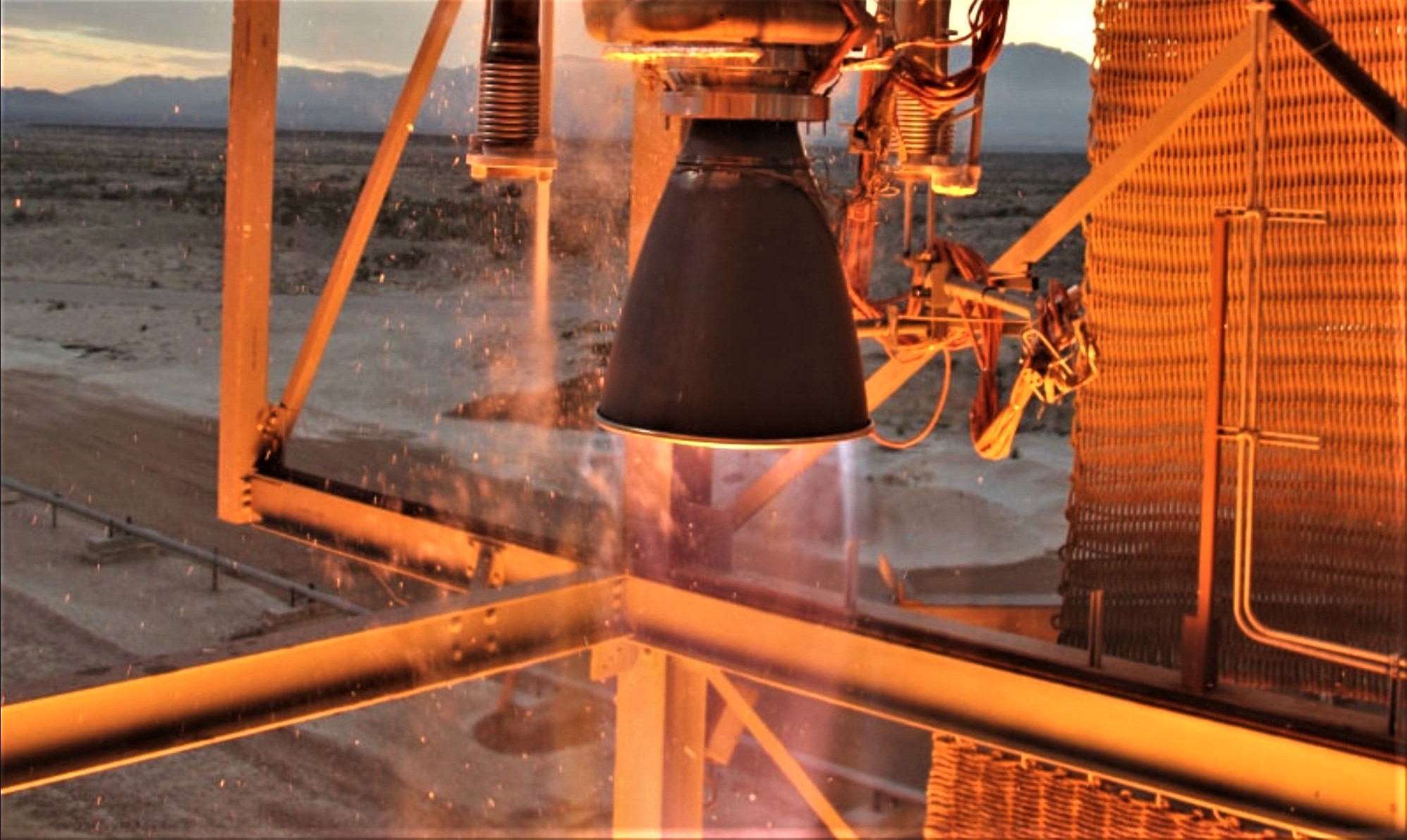

News
Blue Origin continues SpaceX-competitive rocket R&D with hot-fire engine tests
Prospective SpaceX-competitor Blue Origin is continuing research and development work in earnest in an effort to push its first orbital-class rocket, known as New Glenn, closer to the massive vehicle’s launch debut.
In early August, the company shared a video showing a small segment of a long-duration hot-fire test of the rocket engine that will power New Glenn’s second stage, the upper segment of the rocket tasked with placing payloads (typically satellites) into their final orbit(s).
Recent footage of BE-3U demonstration engine hot fire. Two BE-3Us will power upper stage of #NewGlenn & deliver our customers to orbit. We’ve completed over 700 seconds of test time & confirmed performance assumptions used for final BE-3U expander cycle design #GradatimFerociter pic.twitter.com/ygJlgHkyE1
— Blue Origin (@blueorigin) August 10, 2018
Blue Origin recently announced an intriguing decision to change the upper stage engine its New Glenn rocket will use, moving from a vacuum version of the booster’s massive BE-4 engine (BE-4U) to two updated and modified BE-3 engines, the same propulsion system that powers the company’s much smaller New Shepard suborbital rocket. Rated for roughly 110,000 pounds of thrust (compared to Merlin 1D’s ~190,000 lbf thrust), a duo of the vacuum-optimized engines would be expected to produce roughly the same amount of thrust as SpaceX’s Merlin Vacuum (MVac) upper stage engine.
Before BE-3U took its place, Blue’s original plan was to fly New Glenn as a full-up liquid methane and liquid oxygen (methalox0rocket) on both first and second stages, simplifying the vehicle’s fluid systems and the launch pad’s own ground systems. By replacing BE-4U with BE-3U, the company is instead choosing to make New Glenn’s first stage methalox while the second stage will use liquid hydrogen and oxygen (hydrolox).
- A likely dated mockup of New Glenn at the LC-36 launch pad. (Blue Origin)
- Blue Origin’s aspirational future, the highly reusable BE-4 powered New Glenn rocket. (Blue Origin)
- Blue Origin’s BE-4 engine, the propulsion for New Glenn, seen conducting hot-fire tests in Texas. The engine’s nozzles is a full 6 feet (~1.8m) in diameter. (Blue Origin)
- BE-3U seen testing at Blue Origin’s Texas facilities in August 2018. (Blue Origin)
Blue Origin certainly does have more experience flying hydrolox rockets thanks to its suborbital New Shepard program, and BE-3 is also a mature engine as a result. However, the decision is still difficult to parse. Critically, the company chose to significantly change a fundamental aspect of the rocket engine, moving from a combustion tap-off cycle to an expander cycle, where “cycle” refers to the mechanisms used to pump fuel and oxidizer into a rocket engine’s combustion chamber.
Changing cycles is a fairly dramatic revision and consequently diminishes the value of what might be called “flight-heritage” hardware, or rocket components that have been extensively tested and proven during actual flight operations. Noting one of the main points Blue Origin itself has made in the past and on its own website, it should come as no surprise that New Glenn’s launch debut is believed to have slipped from 2020 into 2021 or even 2022, originally reported by Reuters earlier this month.
“With extensive testing and use on New Shepard and the BE-3, the BE-3U will be one of the best-understood rocket engines before it ever launches into space [on New Glenn].” – Blue Origin
New Glenn’s debut delays will likely push Blue Origin’s first lunar Blue Moon landings beyond the original 2023 launch target. Regardless, a considerable amount of work thus lays before Blue Origin before they will be ready to seriously compete with the likes of SpaceX, Arianespace, and ULA on the global launch market.
For prompt updates, on-the-ground perspectives, and unique glimpses of SpaceX’s rocket recovery fleet check out our brand new LaunchPad and LandingZone newsletters!
News
These Tesla, X, and xAI engineers were just poached by OpenAI
The news is the latest in an ongoing feud between Elon Musk and the Sam Altman-run firm OpenAI.

OpenAI, the xAI competitor for which Elon Musk previously served as a boardmember and helped to co-found, has reportedly poached high-level engineers from Tesla, along with others from xAI, X, and still others.
On Tuesday, Wired reported that OpenAI hired four high-level engineers from Tesla, xAI, and X, as seen in an internal Slack message sent by co-founder Greg Brockman. The engineers include Tesla Vice President of Software Engineering David Lau, X and xAI’s head of infrastructure engineering Uday Ruddarraju, and fellow xAI infrastructure engineer Mike Dalton. The hiring spree also included Angela Fan, an AI researcher from Meta.
“We’re excited to welcome these new members to our scaling team,” said Hannah Wong, an OpenAI spokesperson. “Our approach is to continue building and bringing together world-class infrastructure, research, and product teams to accelerate our mission and deliver the benefits of AI to hundreds of millions of people.”
Lau has been in his position as Tesla’s VP of Software Engineering since 2017, after previously working for the company’s firmware, platforms, and system integration divisions.
“It has become incredibly clear to me that accelerating progress towards safe, well-aligned artificial general intelligence is the most rewarding mission I could imagine for the next chapter of my career,” Lau said in a statement to Wired.
🚨Optimistic projections point to xAI possibly attaining profitability by 2027, according to Bloomberg's sources.
If accurate, this would be quite a feat for xAI. OpenAI, its biggest rival, is still looking at 2029 as the year it could become cash flow positive.💰 https://t.co/pE5Z9daez8
— TESLARATI (@Teslarati) June 18, 2025
READ MORE ON OPENAI: Elon Musk’s OpenAI lawsuit clears hurdle as trial looms
At xAI, Ruddarraju and Dalton both played a large role in developing the Colossus supercomputer, which is comprised of over 200,000 GPUs. One of the major ongoing projects at OpenAI is the company’s Stargate program,
“Infrastructure is where research meets reality, and OpenAI has already demonstrated this successfully,” Ruddarraju told Wired in another statement. “Stargate, in particular, is an infrastructure moonshot that perfectly matches the ambitious, systems-level challenges I love taking on.”
Elon Musk is currently in the process of suing OpenAI for shifting toward a for-profit model, as well as for accepting an investment of billions of dollars from Microsoft. OpenAI retaliated with a counterlawsuit, in which it alleges that Musk is interfering with the company’s business and engaging in unfair competition practices.
Elon Musk confirms Grok 4 launch on July 9 with livestream event
News
SpaceX share sale expected to back $400 billion valuation
The new SpaceX valuation would represent yet another record-high as far as privately-held companies in the U.S. go.

A new report this week suggests that Elon Musk-led rocket company SpaceX is considering an insider share sale that would value the company at $400 billion.
SpaceX is set to launch a primary fundraising round and sell a small number of new shares to investors, according to the report from Bloomberg, which cited people familiar with the matter who asked to remain anonymous due to the information not yet being public. Additionally, the company would sell shares from employees and early investors in a follow-up round, while the primary round would determine the price for the secondary round.
The valuation would represent the largest in history from a privately-owned company in the U.S., surpassing SpaceX’s previous record of $350 billion after a share buyback in December. Rivaling company valuations include ByteDance, the parent company of TikTok, as well as OpenAI.
Bloomberg went on to say that a SpaceX representative didn’t respond to a request for comment at the time of publishing. The publication also notes that the details of such a deal could still change, especially depending on interest from the insider sellers and share buyers.
Axiom’s Ax-4 astronauts arriving to the ISS! https://t.co/WQtTODaYfj
— TESLARATI (@Teslarati) June 26, 2025
READ MORE ON SPACEX: SpaceX to decommission Dragon spacecraft in response to Pres. Trump war of words with Elon Musk
SpaceX’s valuation comes from a few different key factors, especially including the continued expansion of the company’s Starlink satellite internet company. According to the report, Starlink accounts for over half of the company’s yearly revenue. Meanwhile, the company produced its 10 millionth Starlink kit last month.
The company also continues to develop its Starship reusable rocket program, despite the company experiencing an explosion of the rocket on the test stand in Texas last month.
The company has also launched payloads for a number of companies and government contracts. In recent weeks, SpaceX launched Axiom’s Ax-4 mission, sending four astronauts to the International Space Station (ISS) for a 14-day stay to work on around 60 scientific experiments. The mission was launched using the SpaceX Falcon 9 rocket and a new Crew Dragon capsule, while the research is expected to span a range of fields including biology, material and physical sciences, and demonstrations of specialized technology.
News
Tesla Giga Texas continues to pile up with Cybercab castings
Tesla sure is gathering a lot of Cybercab components around the Giga Texas complex.

Tesla may be extremely tight-lipped about the new affordable models that it was expected to start producing in the first half of the year, but the company sure is gathering a lot of Cybercab castings around the Giga Texas complex. This is, at least, as per recent images taken of the facility.
Cybercab castings galore
As per longtime drone operator Joe Tegtmeyer, who has been chronicling the developments around the Giga Texas complex for several years now, the electric vehicle maker seems to be gathering hundreds of Cybercab castings around the factory.
Based on observations from industry watchers, the drone operator appears to have captured images of about 180 front and 180 rear Cybercab castings in his recent photos.
Considering the number of castings that were spotted around Giga Texas, it would appear that Tesla may indeed be preparing for the vehicle’s start of trial production sometime later this year. Interestingly enough, large numbers of Cybercab castings have been spotted around the Giga Texas complex in the past few months.
Cybercab production
The Cybercab is expected to be Tesla’s first vehicle that will adopt the company’s “unboxed” process. As per Tesla’s previous update letters, volume production of the Cybercab should start in 2026. So far, prototypes of the Cybercab have been spotted testing around Giga Texas, and expectations are high that the vehicle’s initial trial production should start this year.
With the start of Tesla’s dedicated Robotaxi service around Austin, it might only be a matter of time before the Cybercab starts being tested on public roads as well. When this happens, it would be very difficult to deny the fact that Tesla really does have a safe, working autonomous driving system, and it has the perfect vehicle for it, too.
-

 Elon Musk1 week ago
Elon Musk1 week agoTesla investors will be shocked by Jim Cramer’s latest assessment
-

 News2 weeks ago
News2 weeks agoTesla Robotaxi’s biggest challenge seems to be this one thing
-

 Elon Musk1 day ago
Elon Musk1 day agoElon Musk confirms Grok 4 launch on July 9 with livestream event
-

 News2 weeks ago
News2 weeks agoWatch the first true Tesla Robotaxi intervention by safety monitor
-

 News5 days ago
News5 days agoTesla Model 3 ranks as the safest new car in Europe for 2025, per Euro NCAP tests
-

 Elon Musk2 weeks ago
Elon Musk2 weeks agoA Tesla just delivered itself to a customer autonomously, Elon Musk confirms
-

 Elon Musk2 weeks ago
Elon Musk2 weeks agoxAI welcomes Memphis pollution results, environmental groups push back
-

 Elon Musk2 weeks ago
Elon Musk2 weeks agoElon Musk confirms Tesla Optimus V3 already uses Grok voice AI

